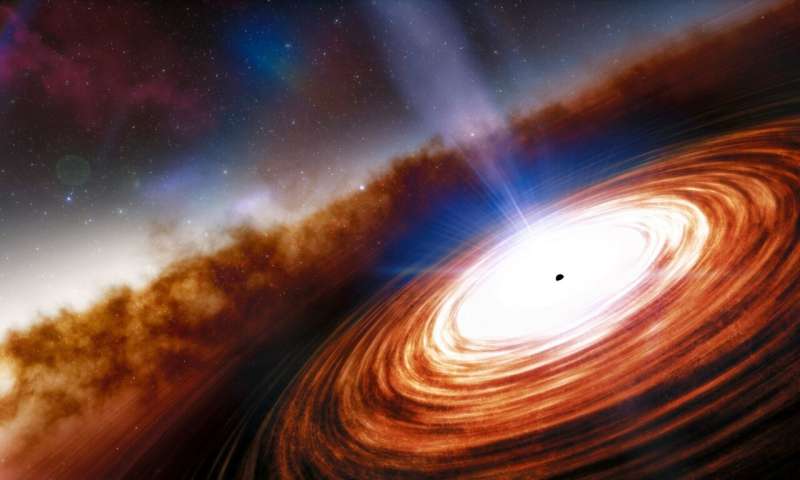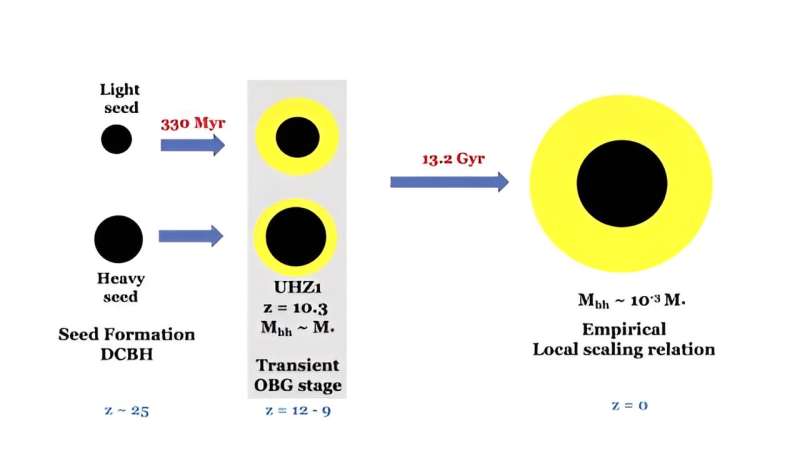This article has been reviewed according to Science X's editorial process and policies. Editors have highlighted the following attributes while ensuring the content's credibility:
fact-checked
preprint
trusted source
proofread
Could this supermassive black hole only have formed by direct collapse?

Nearly every galaxy in the universe contains a supermassive black hole. Even galaxies that are billions of light years away. This means supermassive black holes form early in the development of a galaxy. They are possibly even the gravitational seeds around which a galaxy forms. But astronomers are still unclear about just how these massive gravitational beasts first appeared.
There are two broad ideas. The first, known as the light seed model, is that massive stars in the dense central region of a new galaxy lived their short lives and died to become black holes, then those stellar-mass black holes gradually merged, building up to a supermassive black hole over time. The second is known as the heavy seed model, where dense gas and dust in a young protogalaxy collapsed directly to become a black hole with an initial mass of 100,000 suns or more, then later the galaxy matured around it.
The second model would explain why we see so many large black holes in young galaxies, but it also violates what is known as the Eddington limit. As matter collapses to form a star or black hole, it also heats up, and the resulting light and pressure push back against gravity. Gravity wins in the end, but it takes time. The first model doesn't violate the Eddington limit, but it doesn't explain how early black holes grew so massive so quickly. Without much observational data, astronomers could only rely on variations of these theoretical models, which have been inconclusive.

In a new study, a team of astronomers found an early black hole so massive it supports the heavy seed model. It's a quasar known as UHZ1. Quasars are powered by active supermassive black holes, and from their luminosity, you can get an idea of how massive they are. Based on the brightness of UHZ1, it has a mass of about 40 million suns, and possibly as much as 70 million suns. The quasar has a redshift of z ~ 10.3, meaning we see it at a time when the universe was just 400 million years old. That was toward the end of the cosmic dark ages when the first stars were just beginning to form.
Somehow UHZ1 became supermassive in a cosmically short period of time. The gradual method of merging stellar mass black holes can't generate such a large black hole on that time scale, or at least it isn't likely. The authors are careful to note that with only one example of an early supermassive black hole we shouldn't jump to conclusions. But this is the best evidence thus far for the heavy seed model.
More information: Priyamvada Natarajan et al, First Detection of an Over-Massive Black Hole Galaxy: UHZ1—Evidence for Heavy Black Hole Seeds From Direct Collapse?, arXiv (2023). DOI: 10.48550/arxiv.2308.02654
Journal information: arXiv
Provided by Universe Today




















